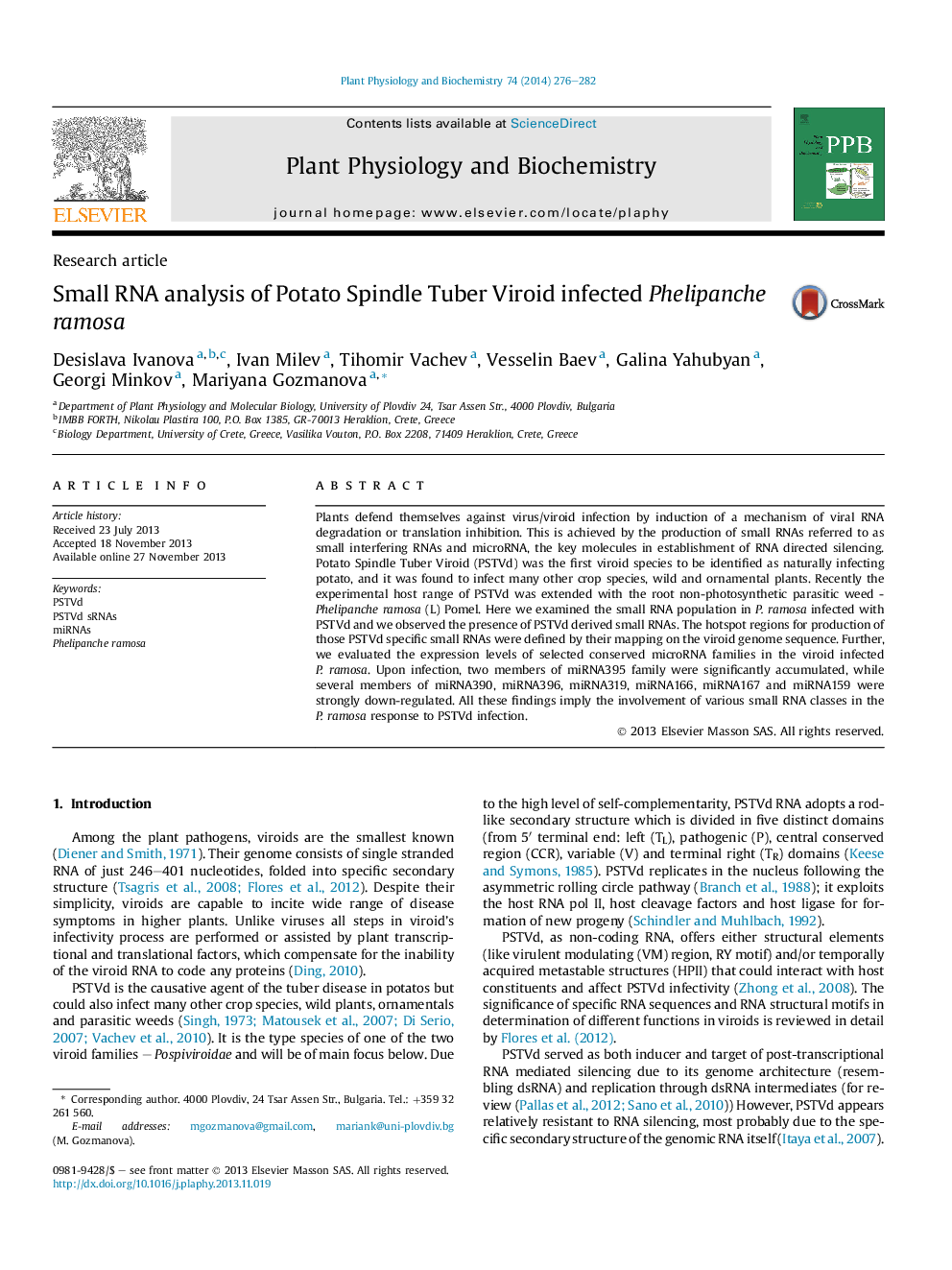| Article ID | Journal | Published Year | Pages | File Type |
|---|---|---|---|---|
| 2015961 | Plant Physiology and Biochemistry | 2014 | 7 Pages |
•PSTVd specific small RNAs were observed in directly infected Phelipanche ramosa.•The hotspot regions of PSTVd specific small RNAs were mapped on the PSTVd genome.•Expression levels of conserved microRNAs were analysed in infected Phelipanche ramosa.•Potential targets of miRNAs were predicted using Phelipanche aegyptiaca ESTs.
Plants defend themselves against virus/viroid infection by induction of a mechanism of viral RNA degradation or translation inhibition. This is achieved by the production of small RNAs referred to as small interfering RNAs and microRNA, the key molecules in establishment of RNA directed silencing. Potato Spindle Tuber Viroid (PSTVd) was the first viroid species to be identified as naturally infecting potato, and it was found to infect many other crop species, wild and ornamental plants. Recently the experimental host range of PSTVd was extended with the root non-photosynthetic parasitic weed - Phelipanche ramosa (L) Pomel. Here we examined the small RNA population in P. ramosa infected with PSTVd and we observed the presence of PSTVd derived small RNAs. The hotspot regions for production of those PSTVd specific small RNAs were defined by their mapping on the viroid genome sequence. Further, we evaluated the expression levels of selected conserved microRNA families in the viroid infected P. ramosa. Upon infection, two members of miRNA395 family were significantly accumulated, while several members of miRNA390, miRNA396, miRNA319, miRNA166, miRNA167 and miRNA159 were strongly down-regulated. All these findings imply the involvement of various small RNA classes in the P. ramosa response to PSTVd infection.
